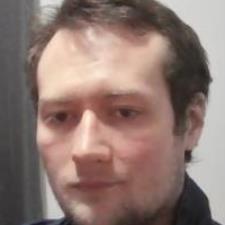
Louis F. answered • 01/07/20
Former Philadelphia School District Teacher and University Tutor
To show that a function is continuous at all points except 0, we must show that for every point except x = 0, the following are true.
For any point a (except a = 0):
f(a) exists
The limit as x approaches a exists
f(a) = the limit as x approaches a.
For any point x=a, we know that |a|/a exists because we can take the absolute value of any real number, and we can divide by anything except 0, and we know a is not 0. This means the function does not exist at x = 0, but this is irrelevant because we are proving that the function is continuous everywhere except x = 0.
To prove the limit exists, we must prove that the left and right hand limit are the same.
Let's look at 2 cases. The first case is that a is any negative number Whenever a is negative |a|/a will always be -1. Think of the example a = -4. |-4|/-4 = 4/-4 = -1. This is true for any negative number, so as the function approaches a n a from the left and right hand side, we will be approaching with negative numbers, and will approach -1 from both sides. So the limit exists for all negative values of a.
The second case is when a is positive. Similarly, for any positive number, |a|/a = +1. Again, if we are approaching a positive number from the left and right hand sides, we are always approaching with positive numbers, so we will approach 1 from both sides, and the limit exists for all positive values of a.
Note that the limit does not exist at 0. When we approach from the left, we are approaching with negative numbers, and therefore approaching -1. When we approach from the right, we are approaching with positive numbers, and therefore approaching 1. Since the right and left hand limit are not the same value, we conclude that the limit does not exist at 0. However, this is irrelevant because we are proving that the function is continuous everywhere except x = 0.
Finally, we must confirm that the value of the function is equal to the limit everywhere except 0. We showed that for every positive number, the limit approaches 1, and we have shown that for every positive number the value of the function is equal to 1. So for positive numbers the limit is equal to the value of the function. We showed the same thing with negative numbers and -1, so for every negative number, the limit is equal to the value of the function.
By confirming these three conditions, we have shown that this function is continuous everywhere except x = 0.






Louis F.
I just noted that the problem specifies that f(0)=0, so it was incorrect of me to say the function does not exist at x = 0. Again, this does not change the answer, because we are testing that it is continuous at every value except x = 0.01/07/20